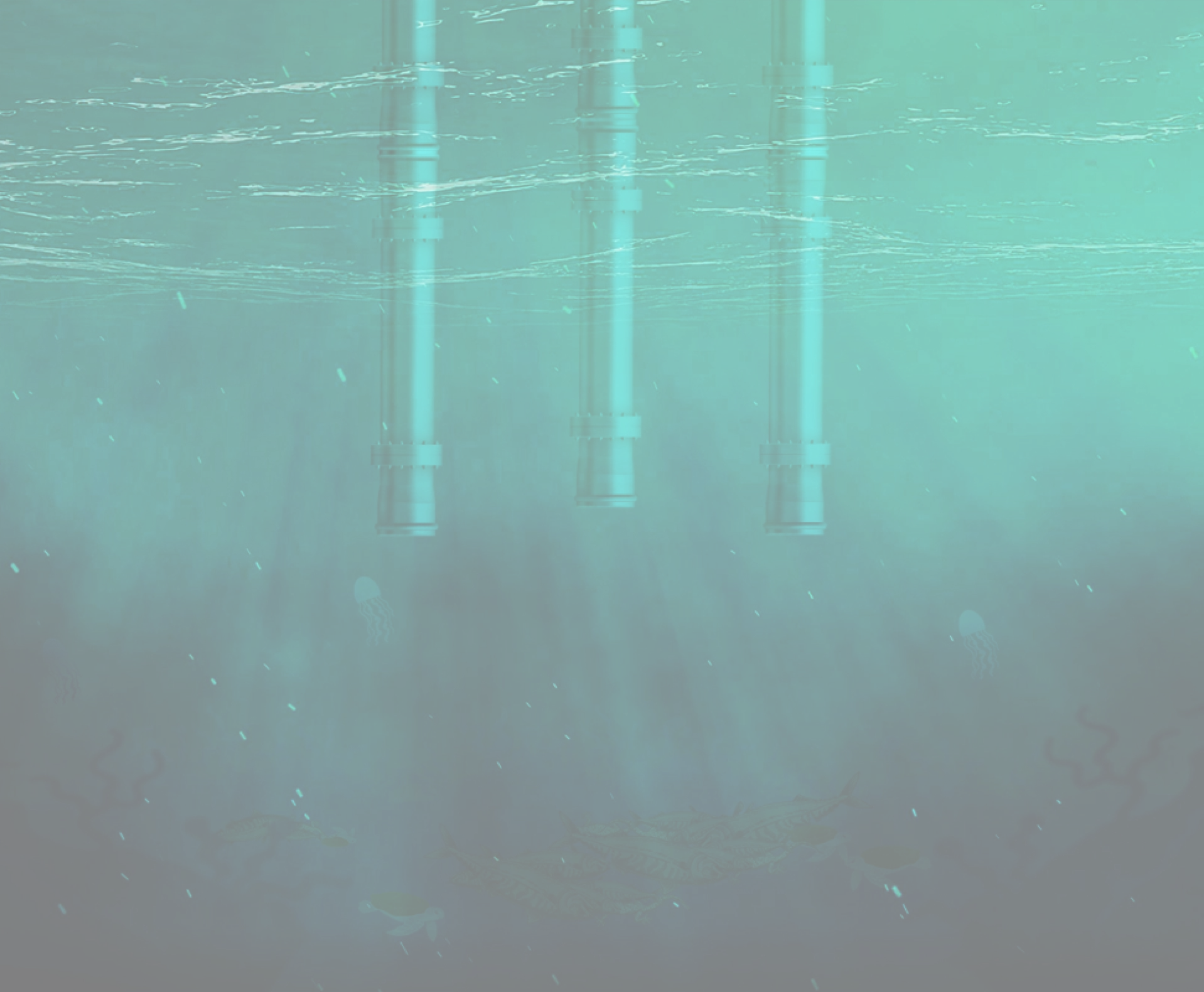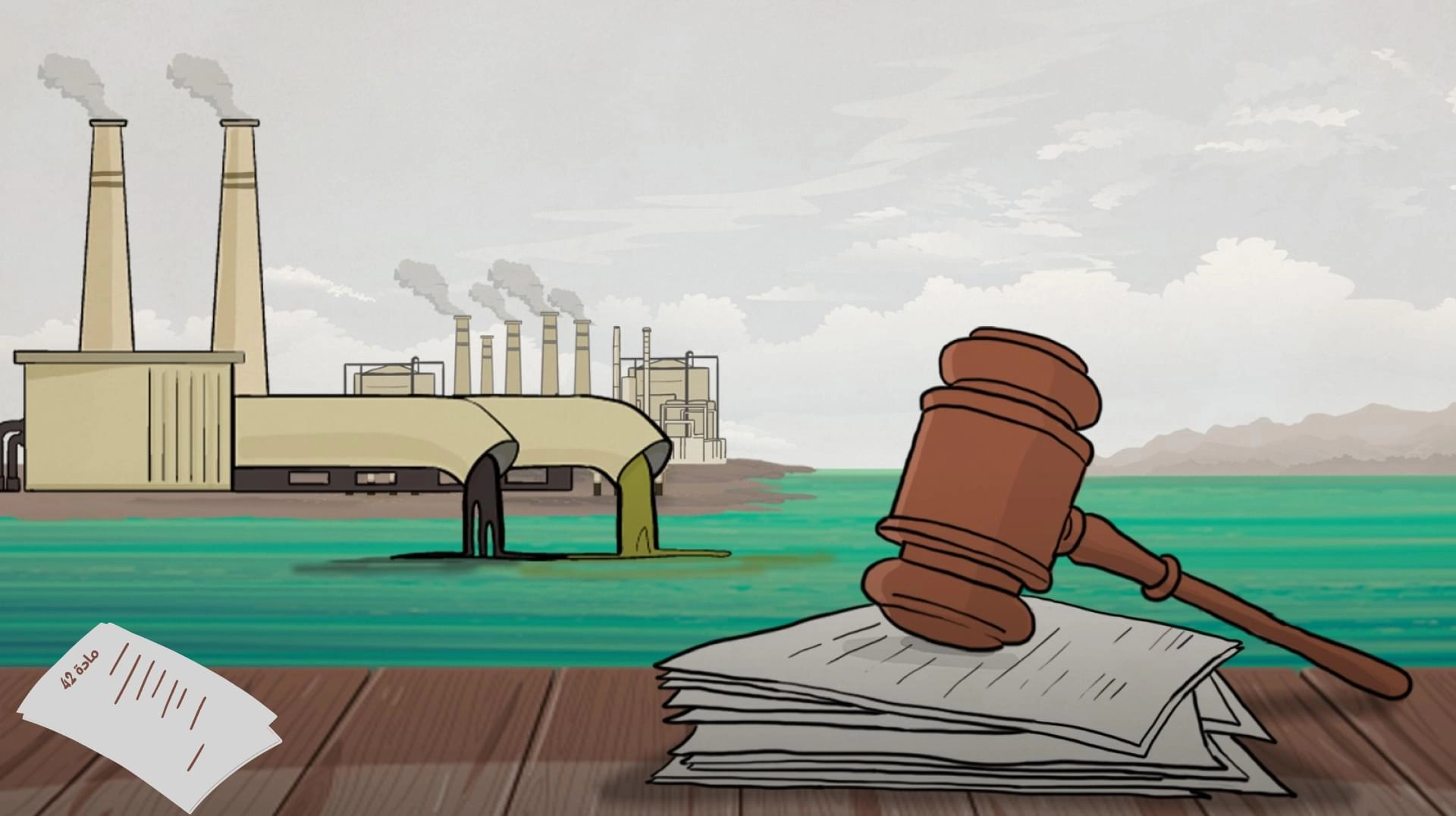





Now, Mubarak loses more than he gains from the profession he loves. With visible frustration, he tells Muwatin: “Sometimes a single fishing trip costs me 1,000 riyals (275 USD)—spent on fuel for the boat, wages for the crew, and other expenses. But the fish I manage to catch sells for just 800 riyals (220 USD). The profits are so slim that on some days, I walk away with nothing at all.”
Speaking to Muwatin, he says, “The drilling near these plants has disrupted fish grazing areas. It’s also possible that brine discharge has altered salinity levels, affecting marine life.”
Mubarak’s concerns about high salinity are echoed by a professional diver who often explores various parts of the Arabian Gulf. Speaking to Muwatin, he describes Al Wakrah as “the saltiest area in Qatar,” noting that even his body struggles to endure the salinity levels in its waters.
Qatar, a small peninsula on the northeastern coast of the Arabian Peninsula, is bordered to the south by Saudi Arabia. Its geography leaves it particularly vulnerable to environmental changes, especially in its coastal and marine ecosystems.



Of these, 69 are operational, 13 are presumed to be active, and the rest are a mix of planned, decommissioned, or canceled plants.

utilize reverse osmosis (RO) technology, with a total capacity of 575 million gallons per day. This is followed by multi-stage flash distillation (MSF), which has a total capacity of 504 million gallons per day, and multi-effect distillation (MED), with a total capacity of 201 million gallons per day.





(million gallons per day)
In Qatar, as in other Gulf countries, most desalination plants focus on providing drinking water, with a total capacity of 948 million gallons per day, while 71 million gallons per day are allocated for industrial use.
However, when considering the number of desalination plants, the largest share serves industrial purposes, with 50 plants dedicated to industry. This is followed by 45 plants designated for drinking water. Additionally, there are 4 plants each dedicated to irrigation and tourism purposes.
71.32
Million gallon per day
948.35
Million gallons per day
258.09
Million gallons per day
0.38
Million gallons per day
4.4
Million gallons per day
0.06
Million gallons per day

According to the GWI database, two plants are named “Umm Al Houl.” The first, using multi-stage flash distillation (MSF) technology, has a capacity of 91 million gallons per day and began operations in 2018. The second, utilizing reverse osmosis (RO) technology has a capacity of 72 million gallons per day and was also launched in 2018. The latter was later expanded in 2021 with another RO plant, which alone produces approximately 74 million gallons per day.
As for “Ras Abu Fontas,” the database lists nine desalination plants under this name. Most of these plants use MSF technology, except for one that operates on reverse osmosis. The largest of these plants, operational since 2009, produces about 43 million gallons per day, while the smallest, launched in 1977, has a capacity of 12 million gallons per day.

"Umm Al Houl” Power Plant is a joint venture, with 60% owned by Qatar Electricity and Water Company (QEWC), 30% by the foreign company K1, and the remaining 10% shared among a consortium of Japanese investors: Mitsubishi (20%), JERA (10%), Qatar Foundation (5%), and QatarEnergy (formerly Qatar Petroleum, 5%). In contrast, “Ras Abu Fontas” plant is wholly owned by QEWC.
Although the “Ras Abu Fontas” and “Umm Al Houl” desalination plants are close to each other and discharge their brine into the same area, their environmental impacts differ significantly. Dr. Radwan Ben Hamadou, a professor of marine ecology at Qatar University, explains in an interview with Muwatin that this difference is primarily due to the methods of brine discharge employed by each plant.


According to Dr. Radwan, Qatar’s oldest desalination plant, “Ras Abu Fontas,” discharges brine directly onto the shore through a single outlet, amplifying its impact on marine life. In contrast, the “Umm Al Houl” plant discharges brine 2.6 kilometers offshore through multiple outlets. This approach significantly mitigates the impact of brine due to higher dilution rates and the large volume of water into which the brine is released.
Dr. Radwan elaborates: “What we cannot change is the amount of salt added to the Gulf every year. The quantity remains the same, whether or not dilution is aided by diffusers.”
A 2022 thesis by researcher Huda Al-Husseini, titled “Assessing the Impact of Brine Discharge from Desalination Plants on Marine Microbial Biodiversity in Qatar,” remains the only scientific study to date focused on a Qatari desalination plant as a case study. The research examined the physical and chemical properties of seawater receiving brine discharge from the Umm Al Houl plant and found no significant changes. Parameters like temperature, salinity, pH, and dissolved oxygen stayed within acceptable ranges for marine environments.

The researcher attributed this to the plant’s offshore discharge point, where brine is rapidly diluted by surrounding seawater. The further the brine travels from the discharge point, the more diluted it becomes.
This dilution lowers the concentration of potentially harmful substances in the brine, reducing its impact on marine life. The study found no clear correlation between microbial diversity and proximity to the discharge outlet, indicating effective dilution.
Dr. Radwan, one of the study’s supervisors, notes: “The comparison between Ras Abu Fontas and Umm Al Houl is crucial because both plants affect the same seagrass, shellfish, coral reefs, and mangroves. However, the impact is vastly different. At Ras Abu Fontas, brine is discharged without diffusers or tidal synchronization, making the damage to marine life evident to everyone.”
Dr. Jenny Lawler, Senior Research Director at the Qatar Environment and Energy Research Institute, acknowledges in an interview with Muwatin that there are few field studies on the environmental impact of desalination plants in Qatar. She attributes this partly to the difficulty of isolating desalination impacts from the numerous other stressors affecting the Gulf, such as climate change, oil and gas operations, commercial fishing, shipping, and construction. However, she notes that other studies have shown that desalination plant discharge can cause coral bleaching and death.
“Brine typically sinks in the water column and can lead to oxygen depletion in deeper layers, negatively impacting sediment-level marine life,” Lawler adds.
According to the paper “The Risks of Mega-Construction: Sustainability of Desalination and Brine Regulation in the Arabian Gulf,” Qatar accounts for 2% of global desalination capacity but is responsible for 5% of global brine production.

The study highlights that multi-stage flash (MSF) distillation technology is highly energy-intensive, primarily due to the thermal energy required for the distillation process. This significant energy demand contributes to greenhouse gas emissions, particularly carbon dioxide (CO₂), which has both short- and long-term negative impacts on human health and the environment. For instance, MSF plants can emit millions of tons of CO₂ annually. The study notes that in 2014, MSF desalination plants in Qatar released 4.66 million tons of CO₂.

Dr. Jenny Lawler believes that Qatar's current thermal desalination plants contribute minimally to greenhouse gas emissions. This is because the heat used in thermal desalination is a byproduct of electricity generation, produced by burning gas in the country’s power turbines. “Until electricity is generated using renewable energy sources, it makes sense to view desalinated water as a secondary product derived from power generation,” she says.
However, she adds that thermal desalination plants discharge brine at higher temperatures and with more chemicals than seawater reverse osmosis (SWRO) plants. For this reason, Qatar’s strategy is to shift away from thermal desalination and adopt reverse osmosis technology.

According to the study “The perils of building big: Desalination sustainability and brine regulation in the Arab Gulf countries,” Qatar currently lacks specific standards for managing brine discharge. The broader Gulf region faces similar challenges, with fragmented environmental regulations and legal uncertainties.
The study points out that none of the GCC countries have established comprehensive environmental monitoring plans, which are essential components of desalination-related environmental regulations. It emphasizes the need for such plans to address key issues, including site selection, mitigation of environmental impacts during construction, monitoring procedures, and emergency measures.
Qatar’s Law No. 30 of 2002, which outlines environmental protection rules across more than 80 articles, does not specifically address the brine discharge issue.
Article 42 mentions protecting the environment from pollution by implementing “preventive and precautionary approaches to safeguard the state’s coasts and ports from all types and sources of pollution risks” and “minimize potential impacts to the lowest possible levels.” Additionally, Article 55 references Decree No. 55 of 1992 regarding the Protocol for Marine Environment Protection from Land-Based Sources, which covers liquid waste discharged into the marine environment, although it does not explicitly mention brine.